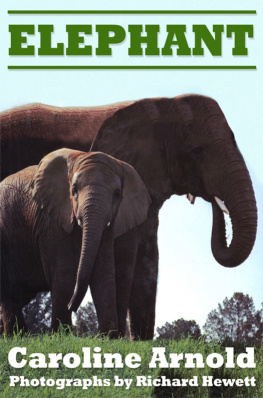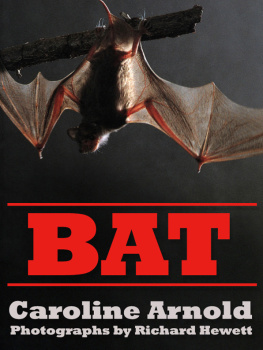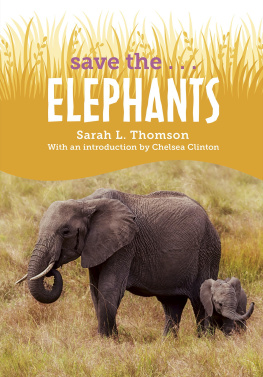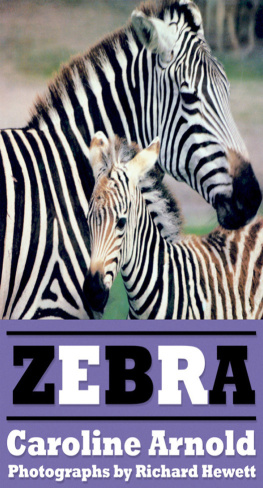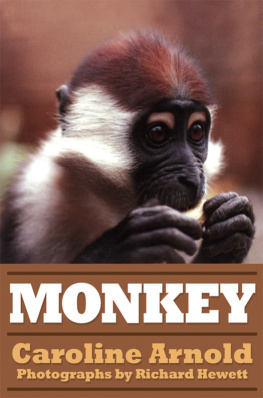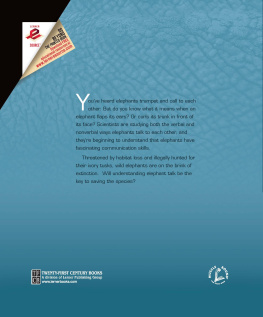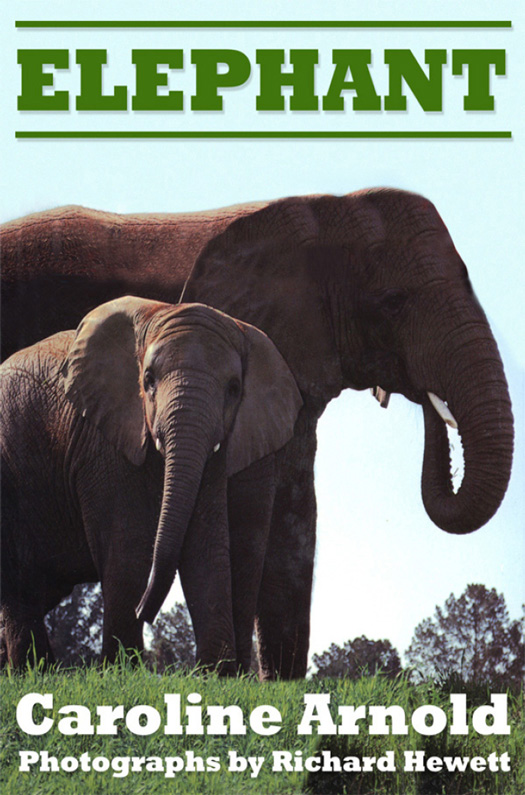

CONTENTS


Guide
PHOTO CREDITS: Permission to use the following photograph is gratefully acknowledged:
Caroline Arnold, .
Copyright 2013, 1993 by Caroline Arnold. Photographs copyright
2013, 1993 by Richard Hewett. All rights reserved.
Published by Seymour Science
Printed edition originally published in 1993 by William Morrow and Company
Except in the case of brief quotations embodied in critical reviews and articles, no part of this book may be used or reproduced in any manner whatsoever without written permission from the publisher.
Contact: Seymour Science LLC, 15 Cutter Mill Road, Suite 242, Great Neck, NY 11021
www.SeymourScience.com
ISBN 978-1-623345-22-8
The Library of Congress has cataloged the printed edition as follows:
Arnold, Caroline. Elephant / Caroline Arnold; photographs by Richard Hewett. Includes index. Summary: Provides information about the physical characteristics and habits of African and Asian elephants in the wild and in captivity. ISBN 0-688-11344-3 (trade).ISBN 0-688-11345-1 (library) 1. ElephantsJuvenile literature. [1. Elephants.] I. Hewett, Richard, ill. II. Title.


Acknowledgments
We are extremely grateful to Marine World Africa USA in Vallejo, California, for their cooperation on this project and for allowing us to get to know and photograph their elephants. In particular, we want to thank Jim Bonde, public relations; Darryl Bush, photographer; and everyone on the Elephant Encounter training staff, especially David Blasko, manager; Pat Flora, supervisor; and Patrick Chappie, trainer (pictured at right). At the time this book was first published, the elephants at Marine World Africa USA included seven Asians Mardji (age 42), Bandula (24), Roman (8), Judy (27), Taj (52), Tina (35), and Ginny (53) and four AfricansTika (age 14), Tava (14), Misha (11), and Mailika (4).
We also want to thank Cecile Fisher and Tom Lewis at the Natural History Museum of Los Angeles County for their assistance regarding elephant tusks and teeth. And, as always, we thank our editor, Andrea Curley, for her continued enthusiastic support.




Flanked on either side by an adult elephant, four-year-old Mailika ambles slowly across the sloping field. The rising sun warms her leathery skin, and through her hollow trunk she can smell the fresh morning air.
As they walk, the elephants trample the newly green grass with their feet, occasionally stopping to pluck tender clumps to eat. With huge appetites to match their giant bodies, elephants are the largest living land animals.
Mailika is the youngest of eleven elephants that live at Marine World Africa USA, a wild animal park in northern California. Mailikas name means angel in Swahili, one of the languages spoken in Zimbabwe, East Africa, where she was born. Mailika is nearly twice as big as she was at birth; but compared with the older elephants, she is still quite small. By the time she is fully grown she will weigh 5 tons (4.5 metric tons) or more.


Along with the great apes and dolphins, elephants are among the most intelligent of all animals. They learn quickly, have good memories, and can be trained to do a wide variety of tasks. At the wildlife park, trainers work with the elephants each day to practice old skills and learn new ones. These sessions provide the elephants with both physical and mental exercise. Most of the elephants tricks are adaptations of their natural behaviors. Walking, running, lifting, pushing, and manipulating objects with their trunks are actions that wild elephants do every day. A trained elephant is directed to do these behaviors on command. Although the park elephants are tame, the trainers are always careful when working with them because, like all wild animals, elephants can be dangerous. The trainers and the elephants know one another well and develop good relationships that are based on mutual trust, respect, and affection.
A morning walk is part of the elephants usual daily routine. They line up single file and each elephant is directed to grasp the tail of the preceding elephant in its trunk. In this formation the elephants are said to be tailed up. Then they are ready to march through the park so visitors can meet them and learn more about them.
The group of elephants at Marine World Africa USA includes ten females and one male, ranging in age from 4 to 53. The elephants get along well together and each has its own distinct personality. For instance, one of the oldest elephants, Mardji, enjoys being petted; Judy likes to borrow her neighbors food at feeding time; and fourteen-year-old Tava is noted for her curiosity.
All day long people can see the elephants in a variety of situations. They can watch them do circus tricks, play games with a ball, or demonstrate pulling and lifting techniques. People can also ride an elephant and watch the elephants as they relax in their outdoor enclosure. Mailika seems to enjoy her time performing and, as she circles the ring to pick up small biscuit treats, people have a chance to see her up close.




American mastodon (left); woolly mammoth (center); modern Asian male (right).

